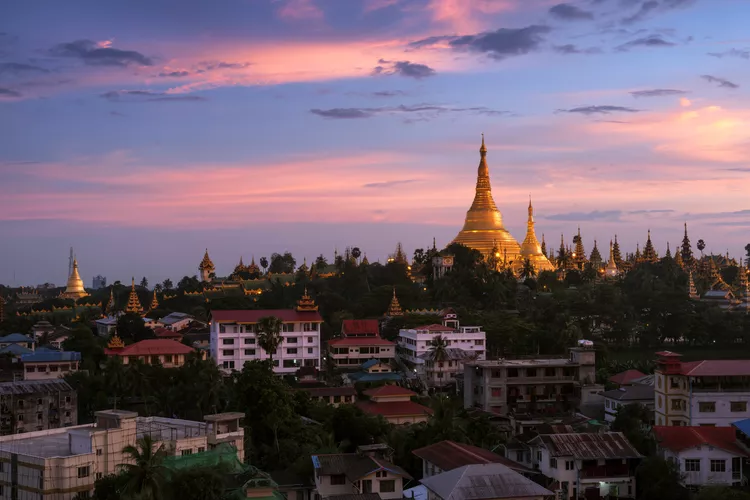1. Hello in Burmese
2. Thank You in Burmese
3. Overview of the Burmese Language
4. Other Useful Burmese Expressions
Hello, Thank You, and Useful Phrases in Burmese
Knowing how to say hello in Burmese will come in very handy as you meet friendly people again and again throughout Myanmar. Learning a few simple expressions in the local language always enhances the experience of visiting a new place. Moreover, doing so also shows people that you are genuinely interested in their lives and the local culture.
Try some of these simple expressions in Burmese and see how many smiles you receive in return!
How to Say Hello in Burmese
The quickest and easiest way to say hello in Myanmar sounds like: ‘ming-gah-lah-bahr.’ This greeting is widely used; however, there are some slightly more formal variations available.
Unlike in Thailand and several other countries, Burmese people don’t wai (the prayer-like gesture with palms together in front of you) as part of a greeting.
- Japanese-style bowing is not a custom in Myanmar.
- You’ll find that shaking hands is rare in Myanmar.
Tip: Contact between males and females is even more limited in Myanmar compared to other Southeast Asian countries. Therefore, avoid hugging, shaking hands, or otherwise touching anyone of the opposite sex while greeting in Myanmar.
How to Say Thank You in Burmese
If you’ve already learned how to say hello, another essential phrase is how to say “thank you” in Burmese. You’ll be using this expression often, as Burmese hospitality is practically unmatched in Southeast Asia.
The most polite way to say thank you in Burmese is: ‘chay-tzoo-tin-bah-teh.’ Although it may seem like a mouthful at first, the expression will roll off your tongue effortlessly after a few days.
An even simpler way to express gratitude — the equivalent of an informal “thanks” — is with: ‘chay-tzoo-beh.’
While it isn’t typically expected, the phrase for “you’re welcome” is: ‘yah-bah-deh.’
The Burmese Language
The Burmese language is related to Tibetan, making it distinctly different from Thai or Lao. Like many languages in Asia, Burmese is a tonal language, which means that every word can hold multiple meanings depending on the tone used. Visitors typically won’t have to worry about mastering the correct tones right away for greetings, as the context usually clarifies meaning. In fact, hearing foreigners mispronounce tones often brings smiles from locals.
Burmese script is thought to be derived from an ancient Indian script from the first century BCE, one of the oldest writing systems in Central Asia. The 34 round, circular letters of the Burmese alphabet are beautiful, yet they can be quite challenging for the uninitiated to read! Unlike in English, there are no spaces separating words in written Burmese.
Other Useful Things to Know in Burmese
- Toilet: Thankfully, this is straightforward. While locals may not understand variations such as “bathroom,” they will recognize “toilet” and direct you accordingly. This practical travel rule holds true in many countries: always ask using the term “toilet.”
- Kyat: The official currency of Myanmar, the kyat, is pronounced more like ‘chee-at’ rather than how it is spelled.




